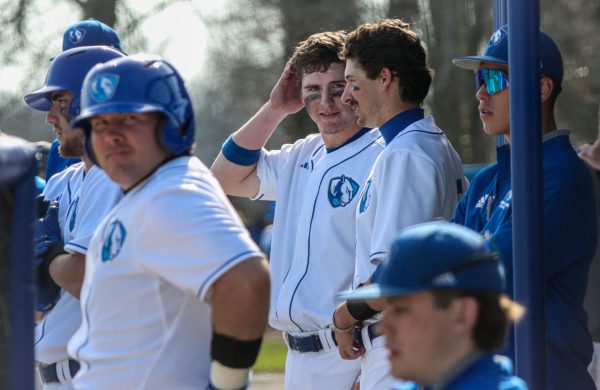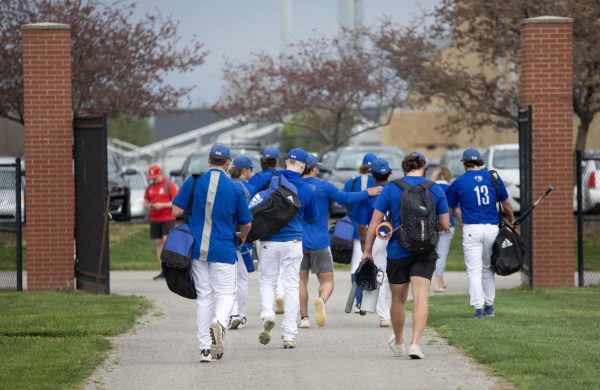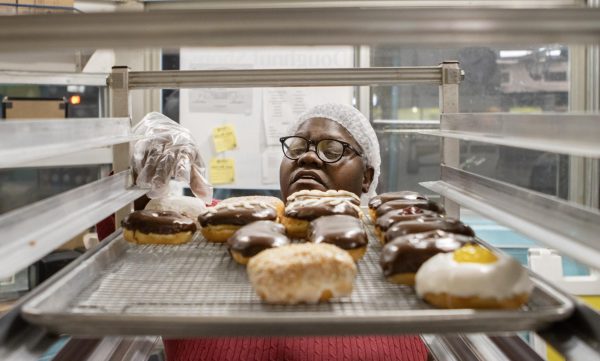Education and retail bad mix
U.S. businesses wait few years after children leave the cradle to hook them advertising schemes and while we focus on the actions of celebrities around us presented by the media, we often fail to recognize the media itself working their way into out lives from the start of our childhood.
Both the Kathy Lee Gifford sweat shop allegations and the Crocodile Hunter feeding a crocodile with his right hand while holding his 1-month-old son with his left, demonstrate failure to protect children.
Similarly, the recent Jackson scandals, Janet exposing her breast to millions during the Super Bowl halftime show and Michael dangling his infant son over a balcony to the press (not to mention his frequent open invitations to little boys for weekend stays at Neverland) continue to appall many.
Though these acts can be debated, questions about morality surround the implications and such exploitations are viewed by society as betrayal to children.
Children are viewed by society as sacred and protecting their rights is a priority.
It is the responsibility of the parents to protect their children, the schools systems to uphold that same protection and the state to monitor and regulate the behavior of the parents and school systems.
So why is it schools systems are excused for child exploitations, selling students to advertisers?
In response to a Chinatown school’s field trip to (and paid for by) Sports Authority, the Chicago Tribune reported on Sunday that many other companies such as Toys “R” Us and Petco have done the same.
For example, Field Trip Factory Inc., started in 1993 and present in 48 states to ferry students to retail outlets, has sent more than 45,000 Chicago-area schoolchildren on trips each year and books 10,000 to 12,000 such trips nationwide each year, the Tribune reported. These companies argue the trips are cheap, efficient, educational tools which examine everything from nutrition to pet responsibility.
Few schools prohibit these field trips because of their commercial element and only reject trips that could “jeopardize the safety of students and chaperons,” the Tribune reported. As an effect, school attendance is down at museums and cultural institutions. Though this cut is partly due to district budget crunches, the convenience factor for these trips is not just costs, but time constraints.
For example, to travel to a museum it may take an entire day, but a trip to a local business can allow to be back in the classroom by lunch, the Tribune reported.
Many feel these trips are too frequent because they are financially plausible and such safety lessons primarily can be taught at home instead of depriving students of valuable classroom time especially needed with pressure to meet state and federal testing standards.
Children are already exposed to advertising more than they should.
Gary Ruskin, director of Commercial Alert, an anti-marketing group, mentioned marketing masquerades in education are used through brand names and corporate logos plastered on school soda machines, football fields and scoreboards, to name a few, the Tribune reported
What will be next, uniforms and school buses decked in company logos like Nascar? Or maybe report cards will be mailed in the form of a program so advertisers can purchase spaces. And just imagine the wonders that can be done with school fundraisers!
Why are so many companies working so hard to weasel their way into the school systems?
Companies strive to get customers at the earliest age to develop brand loyalty.
“It’s cheaper for companies to retain customers than to find new ones,” says Robert Kozinets, professor at Kellog School of Business at Northwestern University, the Tribune reported.
Just look at Super Bowl advertisements for beer. All of them are geared toward the college crowd, not the older crowd. Hooking new customers now will help ensure their business throughout the future.












































